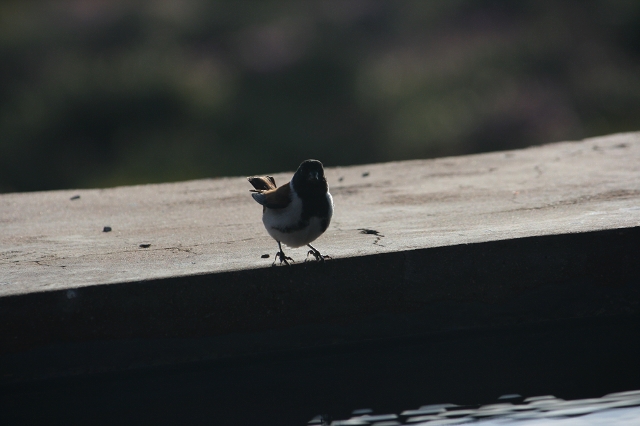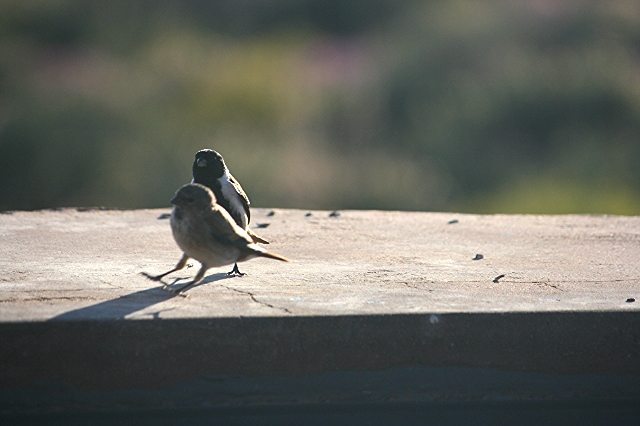order: Passeriformes family: Fringillidae

male

female
Description
Length 12 cm, mass 11-13 g. A striking canary with bold colouration.
Adult male (S. a. alario): Head, neck, chin, throat and centre of upper breast black, extending in an inverted 'V' to the lower breast; belly, centre of lower breast, flanks, and sides of the upperbreast white; back, rump, tail and wing coverts chestnut.
Adult female: Grey head, throat and breast, and white belly; chestnut back, tail and wing coverts.
The juvenile resembles the female, but is paler, has streaking on the breast, and a weaker wing bar.
Taxonomy
This species has two subspecies:
• S. a. alario
• Southern Namibia, South Africa from the west coast to Lesotho, and Lesotho.
• S. a. leucolaemus
• Range overlaps with S. a. alario, but extends further north in Namibia, and not as far south or west in South Africa.
• Male has a pied (rather than black) head, with a white eyebrow, cheeks, chin and throat; female has a faint whitish head pattern similar to that of the male.
Some authorities consider S. a. leucoleamus a separate species, the Damara Canary, Serinus leucolaemus.
This species is placed in genus Alario by Clements.
Distribution and habitat
Endemic to southern Africa, occurring from central Namibia to the Northern, Western and Eastern Cape, the Free State and Lesotho. It generally prefers arid to semi-arid shrublands on rocky slopes, coastal karroid shrubland, alpine and sub-alpine grassland, perennial desert grassland with scattered trees and bushes, road verges, old croplands and Karoo village gardens.
Breeding
Monogamous and probably a solitary nester, although pairs may breed within 10-50 metres of each other.
The nest is built solely by the female in about 4-6 days, consisting of a shallow deep cup of dry grass, fine twigs and bark strips from Lammerlat (Asclepias buchenaviana) and honey-thorns (Lycium) lined with the fluffy seeds of Karoo rosemaries (Eriocephalus) or other downy or cottony plant material. It is typically placed close to ground in a shrub (such as Crassula) or a small tree, often near a ditch or small rock face.
Egg-laying season is almost year-round, peaking from about July-November.
It lays 2-5 eggs, which are incubated solely by the female for about 13-14 days (recorded in captivity).
The chicks are fed by both parents, leaving the nest in captivity after roughly 19-20 days.
Diet
Forages on the ground and in shrubs, trees and grasses for seeds; also eats buds, petals, fruit and termites.
Threats
Not threatened, although its range seems to have contracted in the Western Cape and Botswana (where it is no longer present), it is in demand for the cage bird trade and is not particularly well represented in protected areas
links:
http://www.biodiversityexplorer.org/bir ... alario.htm
http://www.birdforum.net/opus/Black-headed_Canary
http://en.wikipedia.org/wiki/Black-headed_Canary


